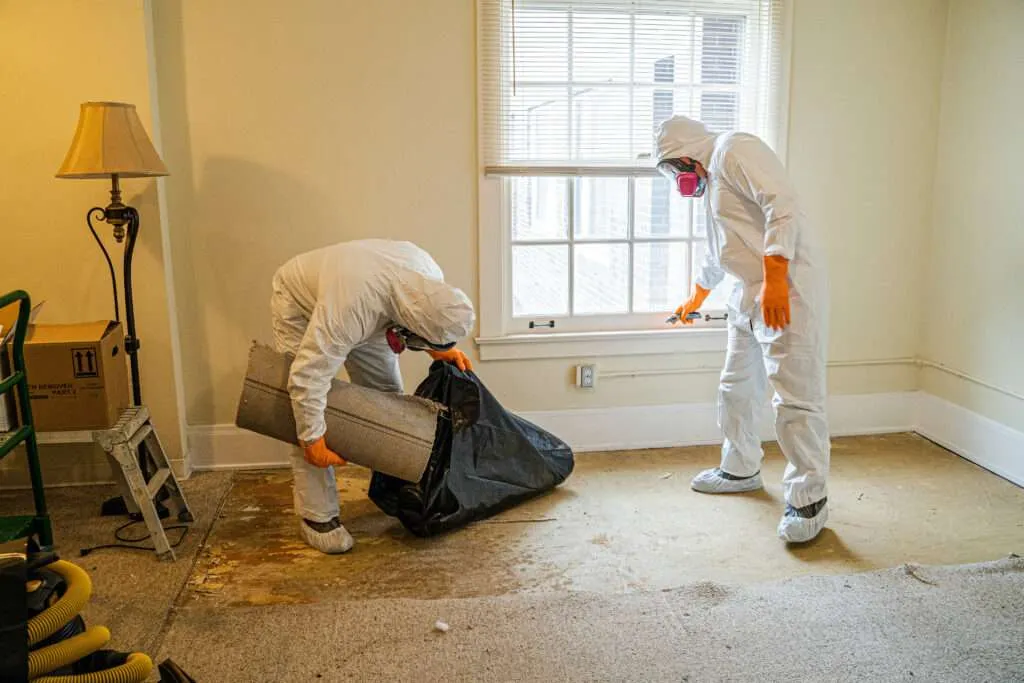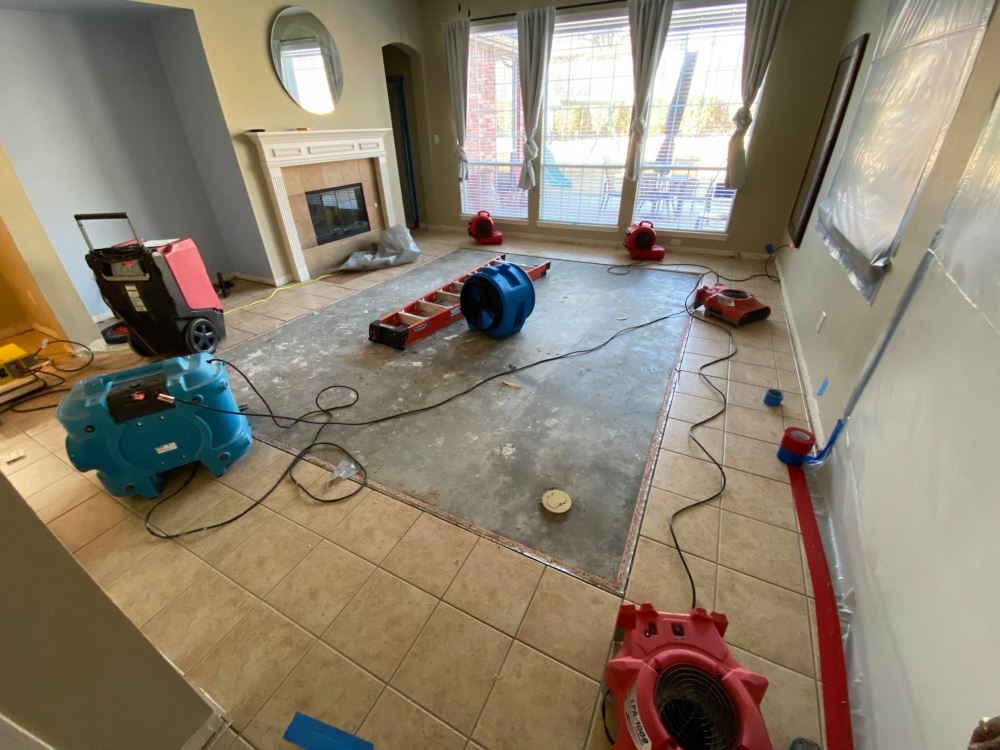Leading Tips for Effective Water Damage Restoration: Protect Your Home Today
Water damage can strike all of a sudden, triggering significant disturbance and possible dangers. Effective restoration calls for a methodical technique to lessen more damage. From reviewing the damage to carrying out precautionary steps, each step plays a vital function in safeguarding property. Understanding these methods can make all the difference in the after-effects of a water-related dilemma. What vital activities should be prioritized to ensure complete protection?
Evaluate the Damage Right Away

Turn off the Water Supply
Shutting off the water is a crucial action in preventing more damage during a water-related event. When a leakage or flood occurs, prompt action is vital to lessen the degree of the damage. Locating the main water shut-off shutoff ought to be a top priority. This shutoff is usually positioned near the water meter or where the water line gets in the property. As soon as situated, transforming the valve clockwise will stop the flow of water. In cases where the major shutoff is hard to reach, private shut-off valves for home appliances might additionally be utilized. Quickly shutting off the water not just safeguards the property from added injury but also promotes the subsequent restoration procedure, making certain that healing initiatives can begin right away.
Remove Excess Water Without Delay
Removing excess water immediately is important for minimizing damage and avoiding mold development in impacted areas. The longer water stays in contact with materials such as insulation, drywall, and timber, the higher the danger of structural damage and the growth of mold. House owners must act quickly to assess the circumstance and utilize suitable tools, such as wet vacuum cleaners or pumps, to draw out standing water successfully. If the quantity of water is substantial, getting in touch with expert restoration solutions might be required, as they can offer customized tools and expertise. Additionally, removing furnishings and possessions from the afflicted area can assist to decrease damage and help with the total restoration procedure. Timely activity not only secures building but likewise help in a smoother healing journey.
Dry Out the Affected Area
After getting rid of excess water, it is important to dry out the damaged location completely. This includes getting rid of any type of standing water and boosting air circulation to facilitate dissipation. Efficient drying will certainly aid prevent mold and mildew development and further damage.
Get Rid Of Standing Water
Swiftly attending to standing water is critical for reliable water damage restoration. The presence of stationary water can bring about further home damage and create an atmosphere for mold and mildew development. To mitigate these dangers, it is necessary to remove standing water as quickly as feasible (Flood Cleanup Services). This procedure generally entails making use of completely submersible pumps, wet vacuums, or specialized extraction tools. Professionals advise examining the deepness and extent of the water prior to deciding on the proper approach for elimination. Safety and security preventative measures need to additionally be taken, including using safety gear and making certain electricity is shut off in affected locations. As soon as the standing water is successfully removed, the drying out procedure can begin, better safeguarding the property from continuous damage
Boost Air Blood Circulation

Inspect for Mold Growth
Mold and mildew growth is a severe concern complying with water damage, as it can result in wellness problems and structural deterioration. After any flooding or leakages, it is necessary to conduct a complete evaluation of the affected areas. This consists of checking surprise rooms such as behind wall surfaces, under carpetings, and in basements or attics where moisture might stick around. Indicators of mold and mildew include a moldy smell, discoloration on surface areas, or visible development. Property proprietors must utilize safety equipment when evaluating, as mold spores can position health and wellness risks. Water Damage Restoration. If mold and mildew is spotted, it is important to address it immediately, as postponing remediation can aggravate the problem and enhance the risk of severe health worries for occupants. Early treatment is essential to effective mold and mildew administration
Fixing and Bring Back Broken Structures
When dealing with water damage, it is crucial to very first evaluate the architectural stability of the affected areas (Water Damage Restoration). This analysis aids recognize possible dangers and notifies the necessary fixing methods. Involving expert restoration services guarantees that the restoration process is carried out safely and effectively
Assess Structural Integrity First
Prior to initiating any type of water damage restoration, it is crucial to evaluate the structural integrity of the damaged area. This analysis helps determine any compromised elements, such as beam of lights, foundations, or walls, which might present safety and security threats. Checking for signs of bending, breaking, or mold and mildew growth is important, as these indications can reveal underlying damage that needs prompt interest. Additionally, recognizing the extent of the damage can assist restoration initiatives and figure out whether repair work are viable or if substitute is necessary. It is very important to record findings extensively, as this information can be valuable for insurance coverage claims or future recommendation. Focusing on structural assessment guarantees that restoration initiatives proceed safely and effectively, eventually protecting the residential or commercial property and its residents.

Use Professional Restoration Services
Making use of specialist restoration solutions is important for efficiently fixing and recovering broken frameworks after water incidents. These professionals possess the required training, tools, and experience to alleviate and assess water damage extensively. They can identify concealed problems, such as mold and mildew development and structural weaknesses, that might not be instantly evident. Expert solutions additionally employ advanced drying out methods and equipment, making certain that all moisture is eliminated to avoid further damage. Furthermore, they abide by market requirements and policies, ensuring that the restoration process is efficient and safe. By involving restoration experts, homeowner can speed up healing, minimize lasting damage, and eventually shield their financial investment - Water Damage Restoration. This positive technique is important in preserving the integrity and security of afflicted structures
Avoid Future Water Damage
To successfully stop future water damage, home owners need to embrace a positive approach to maintenance and repair services. Routine inspection of gutters, downspouts, and roofs is vital; stopped up gutters can bring about water overflow and roof leakages. Additionally, looking for leakages in plumbing fixtures and home appliances can thwart possible damage. House owners must also think about setting up sump pumps in basements or low-lying areas to manage water build-up. Securing fractures in structures and ensuring correct water drainage around the home are essential action in protecting against water breach. Furthermore, preserving moisture degrees with dehumidifiers can prevent mold development. By implementing these safety nets, house owners can greatly decrease the risk of water damage and safeguard their building for the long-term.
When a water damage event happens, it is important to evaluate the damage promptly to mitigate more concerns. Removing excess water quickly is essential for reducing damage and protecting against mold development in influenced locations. Swiftly addressing standing water is vital for reliable water damage restoration. The visibility of stationary water can lead to additional building damage and produce an environment helpful to mold development. Before launching any kind of water damage restoration, it is important to examine the architectural honesty of the afflicted area.